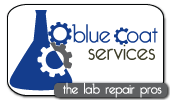As a laboratory technician, the responsibility of regularly maintaining the lab’s equipment in top working condition lies on your shoulders. The usability of equipment depends on their precise measurements and they must not be compromised by neglect. The business of labs relies on delivering accurate results in the least possible turnaround time. Here, we will look at some of the methods we can follow that will help keep the equipment in their best condition.
Refurbishing
This is when the equipment is disassembled thoroughly and cleaned inside out. Then the pieces are all polished and pistons of pipettes are re-lubricated. Parts that are found faulty are replaced. After the process has been completed, the pipette dispenser and burettes will be working like new.
Repairing
While some equipment has to be completely replaced, in many instances, you can continue to work with some lab equipment by making some simple repairs. Many times these are done with parts replaced when needed. This is the best way to increase the functional life of larger equipment. We don’t buy a new car when all you need to do is repair a timing belt; well, the analogy works for your lab equipment also. There are always some parts that wear faster than others. For these, good preventive maintenance is needed.Equipment, such as centrifuges, need to be maintained in excellent working conditions. Failing to do so could prove hazardous to lab technicians, and ruin the results of any lab work used with that equipment.
Calibration Services
Timely and periodical calibration services are required while maintaining the equipment. Detailed, preventive maintenance procedures are important in preventing data corruption. For calibration, there are levels of service available from basic preventive maintenance to advanced accuracy verification for cGMP/cGLP. Other than calibration, there are other processes involved in the maintenance of lab equipment.
Cleaning
This seems so simple, yet is often overlooked. This is an important part of keeping equipment in top working order. Wipe clean the exteriors of equipment daily. Hard clean once a week. Specific machines may have a certain way of cleaning them. For example, if it’s a hematology machine, clean the analyzer surface weekly, check HC control monthly, and have an engineer check the whole system every six months. If it’s a chemistry machine, besides the analyzer surface, clean the upper and lower heater weekly and check Humatrol control every six months. For a microscope, clean the glass with a mixture of 70% ether and 30% alcohol weekly. Clean the objectives, lamp and condenser monthly.
An important aspect about lab equipment repair and maintenance is that it should be done by qualified personnel from reputable companies. Besides basic cleaning and repairing or replacing of faulty components, qualified personnel must be capable of predicting potential failure of parts.
Most laboratories cannot afford expensive in-house maintenance teams and rely on original equipment manufacturers (OEMs) or reputable third parties who are also equipment suppliers. There a few things to take care of when contracting third party preventive maintenance teams. These include availability of spare replacements, professionally trained experts, regular updates, dependable service, and availability of comprehensive warranties.
As with any mechanical piece of equipment, there will be a breakdown over time. The accuracy and reliability of readings in many electronic devices naturally deteriorates, and accuracy is the most important thing for a lab to produce. As defined by the manufacturer, it is necessary to calibrate the instruments on a regular schedule. The reputation of a laboratory is as good as the accuracy of its equipment. Regular calibration, repair, refurbishment, and or replacement increase the production yields and the consistency between measurements.

